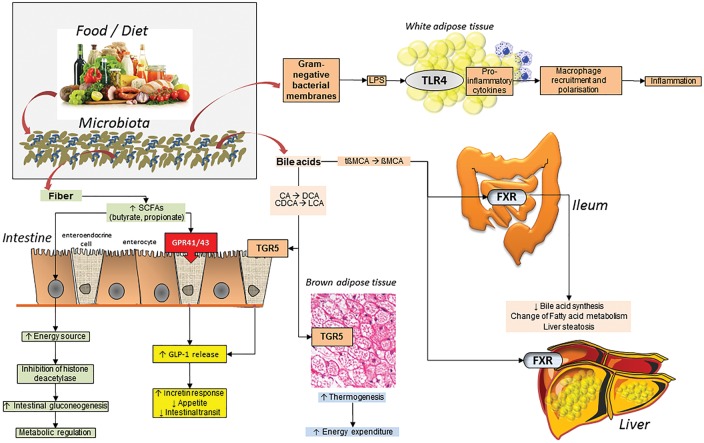Figure 1.
Complex pathways linking diet to microbiota to fermentation and a number of metabolic processes in the body. Fermented dietary fiber results in short-chain fatty acids (SCFAs) production. In enterocytes, this process provides an energy source and is associated with histone deacetylase (HDAC) inhibition in enterocytes, stimulation of intestinal gluconeogenesis and metabolic regulation. SCFAs stimulate the G-protein coupled receptor 41 and 43 while the secondary bile acid lithocholic acid (LCA) and deoxycholic acid (DCA) stimulate the bile acid receptor TGR5 in the enteroendocrine cell with release of glucagon-like peptide-1 (GLP-1). This step, in turn, increases incretin secretion, suppresses appetite and reduces intestinal transit. Following microbiota biotransformation of primary into secondary bile salts, the stimulation of TGR5 in the brown adipose tissue promotes thermogenesis and energy expenditure. Also, the deconjugation of taurobetamuricholic acid (tbMCA) provides the repression of the natural farnesoid X receptor (FXR), decreased bile acid synthesis and changes of fatty acid (FA) metabolism. Gram-negative bacterial membranes produce lipopolysaccharide (LPS) a pro-inflammatory molecule that induces macrophage recruitment and polarization in white adipose tissue inducing inflammation through Toll-like receptor 4 (TLR4)
Adapted from: Arora T and Bäckhed F. The gut microbiota and metabolic disease: current understanding and future perspectives. J Intern Med 2016;280:339–49 [45].

